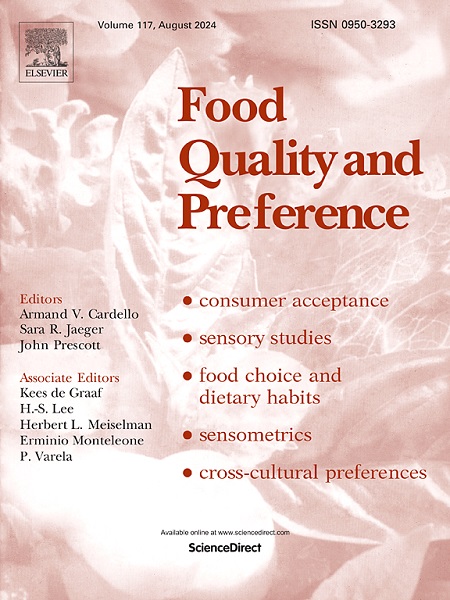Go with the flow: How changing the default can drive consumer choice for climate friendly menu options
IF 4.9
1区 农林科学
Q1 FOOD SCIENCE & TECHNOLOGY
引用次数: 0
Abstract
Restaurant customers typically select from pre-set menu options, as requesting alternatives requires additional cognitive and emotional effort. ‘Going with the flow’ is easier and often sufficient to meet perceived consumption goals (e.g., having a nice meal in a restaurant). This paper shows how restaurants can change the default option as a strategy to nudge customers toward more climate friendly choices. Specifically, we demonstrate, in a buffet restaurant field context, that setting a vegetarian option as the default (requiring customers to request the meat option) more than doubles the sales of the vegetarian option relative to the meat default condition. While these results build on previous research in a novel context, we also provide new insights into the default nudge, revealing a potential drawback of its effect. We find that changing the default can also divert customers from the focal product category and cause a significant decrease, 30.1 %, in overall sales at those buffet stations. However, customer satisfaction levels remain consistent across both conditions, suggesting that the drop in sales is not due to dissatisfaction with the vegetarian default but rather reflects the ease of choosing alternatives at other buffet stations. These findings offer a more nuanced perspective that, while changing the default can effectively encourage more climate friendly menu choices, it should be carefully designed to prevent potential business losses.
随波逐流:改变默认值如何推动消费者选择对气候友好的菜单选项
餐厅的顾客通常会从预先设定好的菜单选项中选择,因为要求选择其他选项需要额外的认知和情感努力。“随波逐流”更容易,而且往往足以满足预期的消费目标(例如,在餐馆吃一顿好饭)。这篇论文展示了餐馆如何改变默认选项,作为一种策略,推动顾客做出更环保的选择。具体来说,我们演示了在自助餐厅字段上下文中,将素食选项设置为默认选项(要求客户请求肉类选项)使素食选项的销售额相对于肉类默认条件增加了一倍以上。虽然这些结果建立在以前在一个新的背景下的研究基础上,但我们也对默认助推提供了新的见解,揭示了其效果的潜在缺点。我们发现,改变默认值也会使顾客偏离重点产品类别,并导致这些自助站的总销售额显著下降,下降幅度为30.1%。然而,在两种情况下,顾客的满意度水平保持一致,这表明销售额的下降不是由于对默认素食的不满,而是反映了在其他自助餐站选择替代品的便利性。这些发现提供了一个更微妙的观点,即虽然改变默认值可以有效地鼓励更多的气候友好型菜单选择,但应该仔细设计,以防止潜在的商业损失。
本文章由计算机程序翻译,如有差异,请以英文原文为准。
求助全文
约1分钟内获得全文
求助全文
来源期刊

Food Quality and Preference
工程技术-食品科技
CiteScore
10.40
自引率
15.10%
发文量
263
审稿时长
38 days
期刊介绍:
Food Quality and Preference is a journal devoted to sensory, consumer and behavioural research in food and non-food products. It publishes original research, critical reviews, and short communications in sensory and consumer science, and sensometrics. In addition, the journal publishes special invited issues on important timely topics and from relevant conferences. These are aimed at bridging the gap between research and application, bringing together authors and readers in consumer and market research, sensory science, sensometrics and sensory evaluation, nutrition and food choice, as well as food research, product development and sensory quality assurance. Submissions to Food Quality and Preference are limited to papers that include some form of human measurement; papers that are limited to physical/chemical measures or the routine application of sensory, consumer or econometric analysis will not be considered unless they specifically make a novel scientific contribution in line with the journal''s coverage as outlined below.
 求助内容:
求助内容: 应助结果提醒方式:
应助结果提醒方式:


